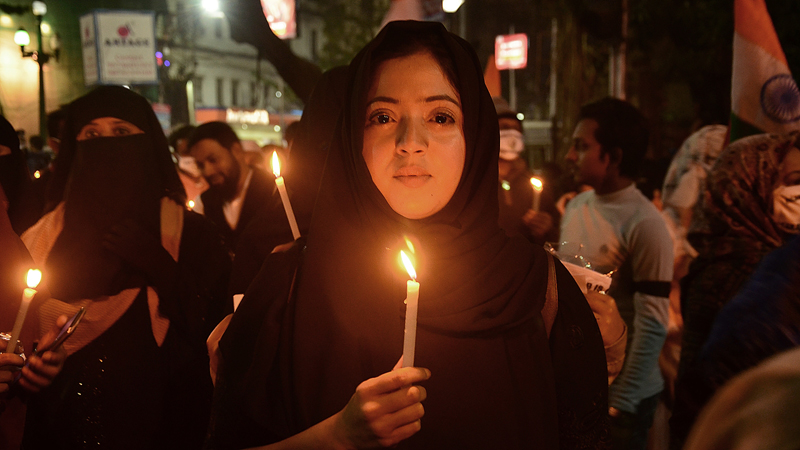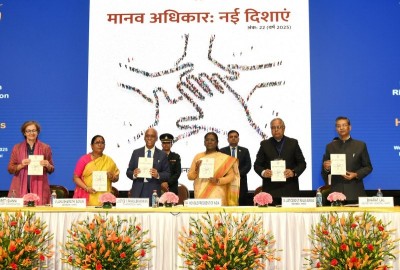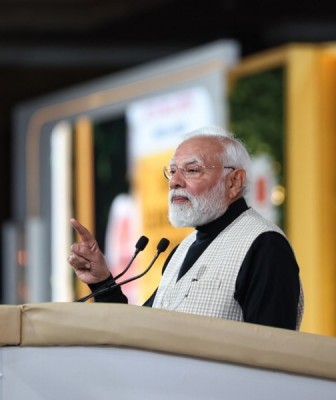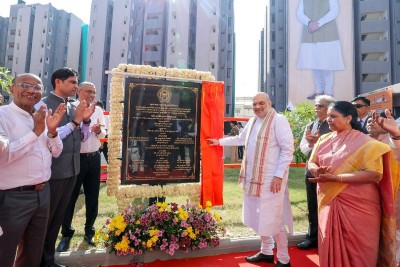 Karnataka Hijab Row
Karnataka Hijab Row
Hijab row in Karnataka: Handiwork of people using religion for political mobilisation
The ongoing protest in Karnataka around ‘hijab’ is quite contrary to the general peaceful environment in the schools, colleges and universities in India.
It seems the protests in Karnataka are the handiwork of a few people in limited pockets who might be aiming to use religious ‘identity’ for political mobilisation.
India is a country where law and order and social control prevail; therefore, anti-social people do not have a free will. It is expected that the Karnataka protests would soon fizzle out.
The order about the dress code was not against “hijab” in personal and public space. It was about fostering uniformity, cosmopolitan living and assimilation among peers in educational institutions without any barrier due to the religious and social affiliation.
The controversy was uncalled for as Government Girls PU College Karnataka issued the order for common dress code based on already existing Section 133 (2) of the Karnataka Education Act, 1983, but the politically motivated groups tried to utilise this as an opportunity to divide the students aiming at destabilising the social fabric of the state and the country. India prides itself in its principle and practice of democracy and “unity in diversity”.
.jpg)
The police and the government acted timely, swiftly and cautiously. Meanwhile, the government has declared a three-day holiday for colleges and schools and is holding meetings with students and other stakeholders to resolve the controversy.
.jpg)
Indian educational institutions represent a rainbow culture in which, not only the constitutional spirit of “secularism” is maintained in “words and spirit”, but also no discrimination is done on the basis of gender, religion, caste, creed and region.
The Indian educational system had great stalwarts from all the communities including Muslim community. Great scientists and intellectuals like APJ Abdul Kalam, Prof Munis Raja, Prof Irfan Habib and many others were produced by the Indian education system.
.jpg)
India has had justices and Chief Justices from the Muslim community educated in its public and private institutions.
Najma Heptulla, former Vice Chancellor of Jamia Milia Central University and sixtime member and the Deputy Chairperson of Rajya Sabha, the Upper House of Indian Parliament, inspires young women for her seminal contributions in education and politics.
.jpg)
From government to defense, sports to films and local democratic institutions, Indian democracy is non-discriminatory.
Beautician Shahnaz Husain, who is an internationally acclaimed pioneer of the herbal beauty care movement inspired and supported a large number of women entrepreneurs in the beauty industry.
.jpg)
Given the pluralist and assimilative nature of Indian culture (Ganga Jamuni Tehzeeb), society and polity such divisive tendencies would not be tolerated either by the people or the government.The public life in India is very secular and it is not hard to find temples and mosques standing together in the same vicinity or Muslim habitats in Central Business Districts as well as posh locations.
The directives about dress code by a Karnataka college needs to seen in proper perspective, that is, they aim to instill and foster cosmopolitan and national identity as “common identity” for all the students rather than camouflaging personal, religious, regional or any other local identity without interfering with personal faith and choices.
Other countries and societies where primordial values act as a barrier to change and transformation, need to learn from India, especially one neighbour in the north west, who has the habit of meddling in our affairs, concealing frequently the dismal state of affairs inside her own society and polity in the neighbourhood and West Asia.
Support Our Journalism
We cannot do without you.. your contribution supports unbiased journalism
IBNS is not driven by any ism- not wokeism, not racism, not skewed secularism, not hyper right-wing or left liberal ideals, nor by any hardline religious beliefs or hyper nationalism. We want to serve you good old objective news, as they are. We do not judge or preach. We let people decide for themselves. We only try to present factual and well-sourced news.







